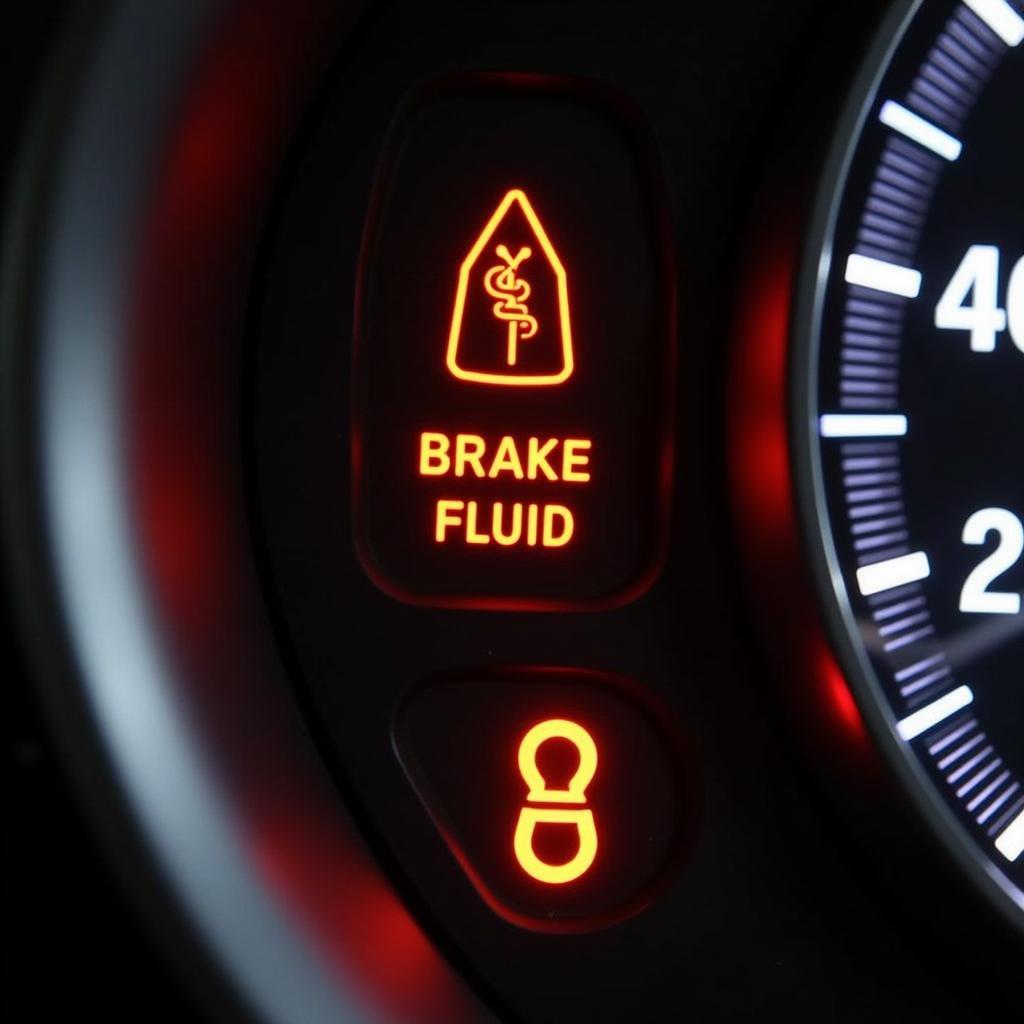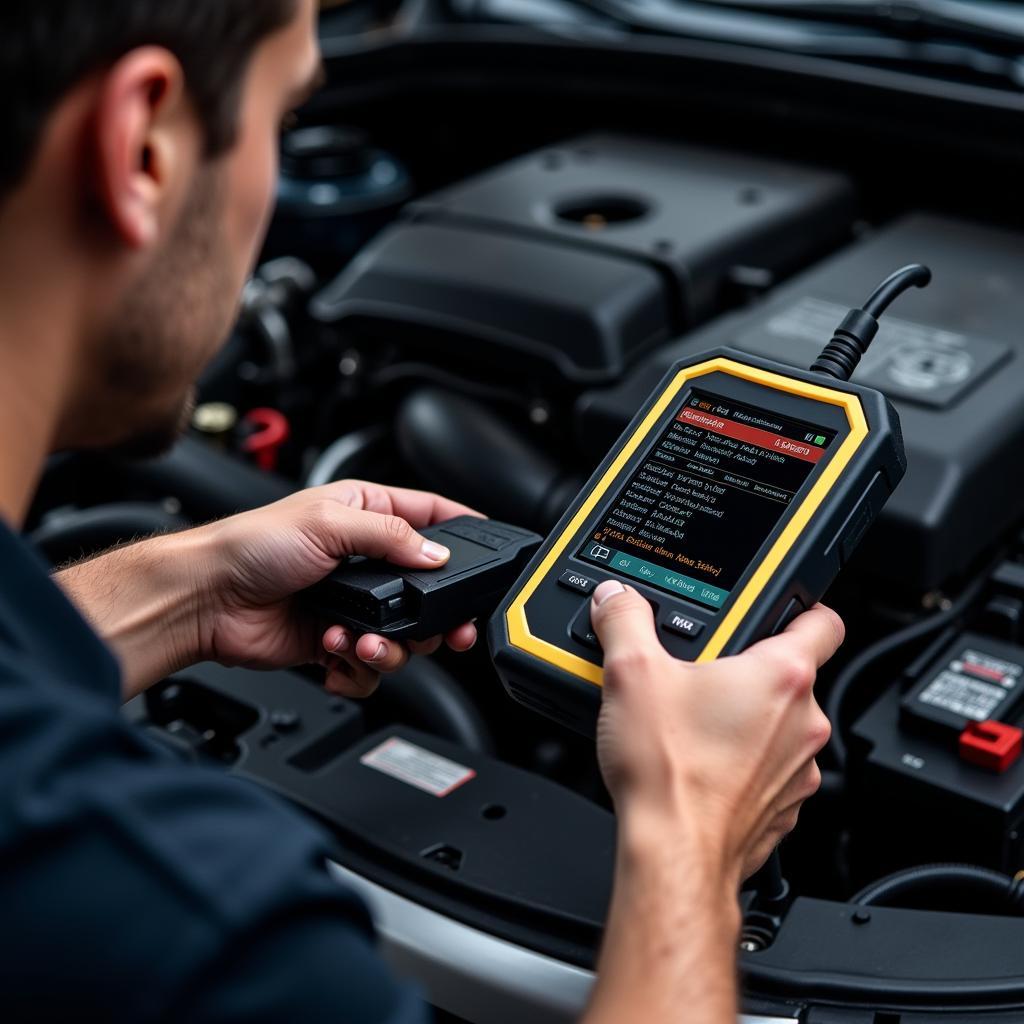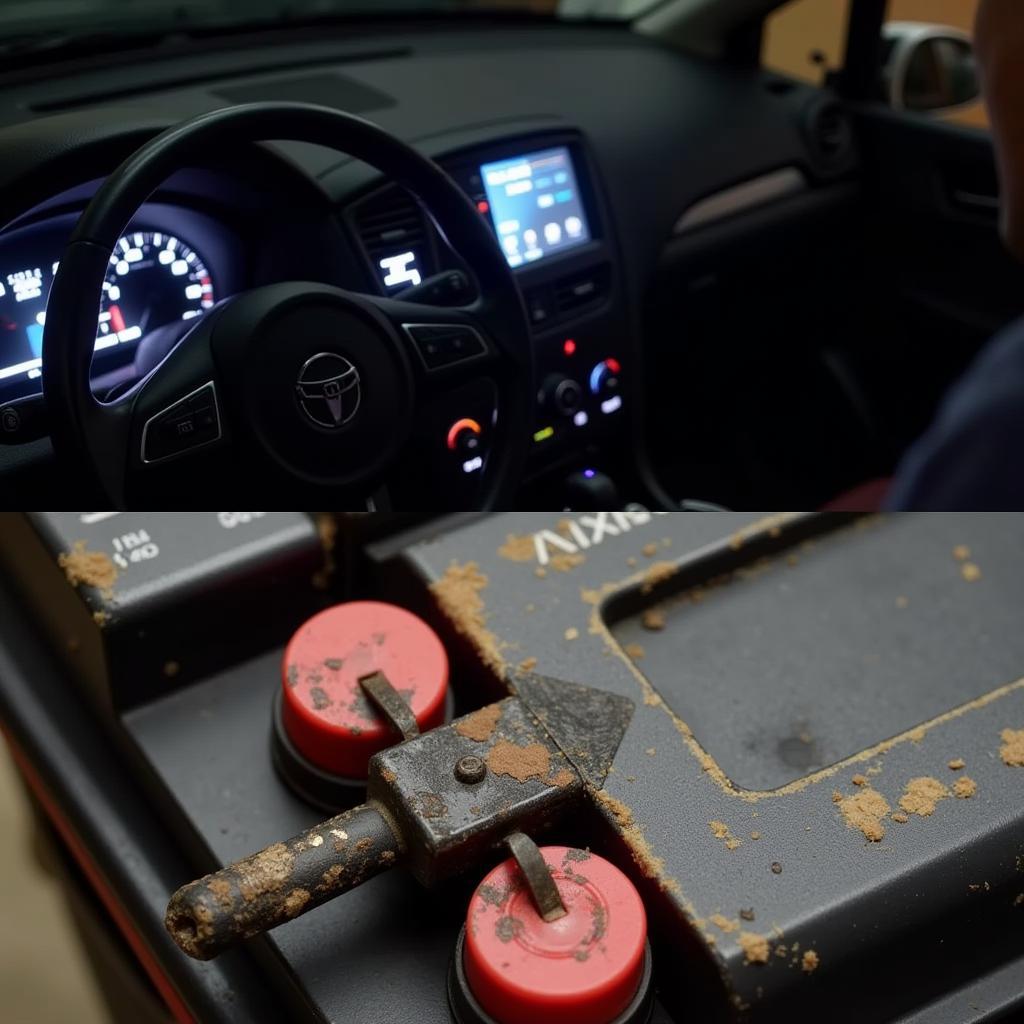The brake warning light is a crucial safety feature in your vehicle, designed to alert you to potential problems within the braking system. Understanding how this warning light works is essential for maintaining your vehicle’s safety and preventing costly repairs. From simple parking brake engagements to more serious hydraulic failures, this seemingly small light can communicate a range of issues that demand your attention. This article delves into the intricacies of the brake warning light, exploring its various functions and offering guidance on how to respond when it illuminates. You might find our article on how brake pad warning lights work helpful as well.
One of the most common reasons for the brake warning light to illuminate is a simple one: the parking brake is engaged. Before panicking, ensure the parking brake is fully released. This seemingly obvious check can often resolve the issue. If the light persists after releasing the parking brake, further investigation is needed.
Different Types of Brake Warning Lights
While the general function of the brake warning light is consistent, there can be different types of lights, each indicating a specific issue. Some vehicles have a single light that illuminates for various brake-related problems. Others might have separate lights for the parking brake, anti-lock braking system (ABS), and low brake fluid levels. Knowing the specific warning lights in your vehicle is crucial for accurate diagnosis. For example, a Honda Odyssey might have a specific brake system warning light configuration.
Understanding the Low Brake Fluid Warning
A common reason for the brake warning light to activate is low brake fluid. This indicates a potential leak in the braking system, which compromises its ability to generate the necessary pressure to stop the vehicle effectively. Ignoring a low brake fluid warning light can lead to brake failure, making it a critical safety concern.
 Low Brake Fluid Warning Light Illustration
Low Brake Fluid Warning Light Illustration
Low brake fluid levels often necessitate immediate attention. It’s crucial to check the fluid level in the master cylinder and top it off if needed. However, simply adding fluid doesn’t address the underlying leak. It’s essential to have the brake system inspected by a qualified technician to identify and repair any leaks. You can even explore remote diagnostic options, like those mentioned on our site regarding the Veloster e brake warning light.
What to Do When the Brake Warning Light Comes On
If your brake warning light illuminates, it’s essential to address the issue promptly. Pull over to a safe location, check your parking brake, and inspect your brake fluid level. If the parking brake is not engaged and the fluid level is adequate, the issue might be more complex.
Troubleshooting Brake Warning Light Issues
Troubleshooting brake problems can be intricate. Modern vehicles often have complex electronic brake systems, making diagnosis challenging without specialized equipment. If the simple checks don’t resolve the issue, it’s advisable to consult a qualified technician. They can utilize diagnostic tools to pinpoint the exact problem and recommend appropriate repairs.
 Mechanic Using Diagnostic Tools for Brake Warning Light
Mechanic Using Diagnostic Tools for Brake Warning Light
For instance, issues like a malfunctioning ABS sensor or a problem with the electronic brake control module (EBCM) can trigger the brake warning light. These issues require specialized diagnostic procedures and repair. Sometimes, even seemingly unrelated systems can interact and trigger the warning light, as illustrated in cases like the 2015 Chevy Silverado 1500 trailer brake system warning.
Importance of Regular Brake System Maintenance
Regular brake system maintenance is paramount for preventing problems and ensuring optimal performance. This includes routine brake inspections, fluid flushes, and pad replacements. Adhering to the manufacturer’s recommended maintenance schedule helps identify potential issues early on, preventing them from escalating into major problems. Perhaps you could find some helpful tips in our quizlet about the parking brake warning light.
Why is preventative maintenance important?
Preventative maintenance helps avoid costly repairs down the road and ensures your safety on the road by maintaining the optimal functioning of your brake system. It’s a proactive approach that contributes significantly to the longevity and reliability of your vehicle’s braking system.
Conclusion
The brake warning light is a vital safety indicator. Understanding how it works and responding appropriately when it illuminates is crucial for your safety and the well-being of your vehicle. From the simple engagement of the parking brake to more complex issues like low brake fluid or ABS malfunctions, the brake warning light communicates important information about the health of your braking system. Never ignore a glowing brake warning light. Addressing the issue promptly ensures safe and reliable braking performance and prevents potentially dangerous situations.
FAQ
-
What does it mean if my brake warning light is on? It indicates a potential problem with your braking system, which can range from a simple engaged parking brake to more serious issues like low brake fluid or a malfunctioning component.
-
Can I drive with the brake warning light on? It’s not recommended. While you might still have some braking ability, driving with the warning light on poses a safety risk.
-
What should I do if my brake warning light comes on while driving? Pull over to a safe location as soon as possible, check your parking brake, and inspect your brake fluid level. If the issue persists, contact a qualified technician.
-
How often should I have my brakes checked? Follow the manufacturer’s recommended maintenance schedule for brake inspections and service.
-
What can cause low brake fluid? Leaks in the brake lines, hoses, or calipers are common causes of low brake fluid.
-
How much does it cost to fix a brake warning light issue? The cost varies depending on the underlying problem. A simple brake fluid top-up might be inexpensive, while more complex repairs, like replacing a faulty ABS sensor, can be significantly more costly.
-
Can I fix a brake warning light issue myself? Simple checks like releasing the parking brake and topping off the brake fluid can be done at home. However, more complex diagnoses and repairs should be handled by a qualified technician.



